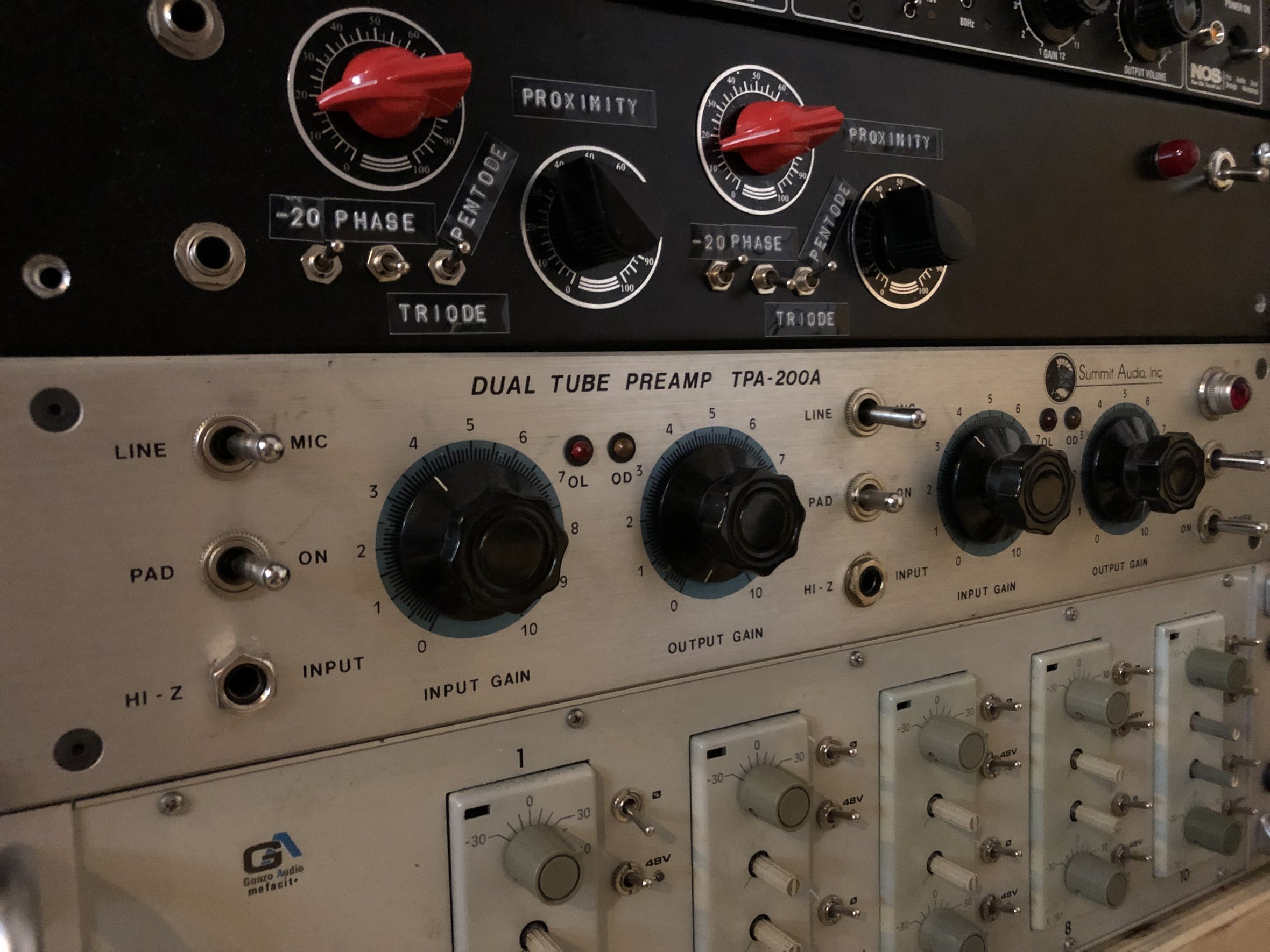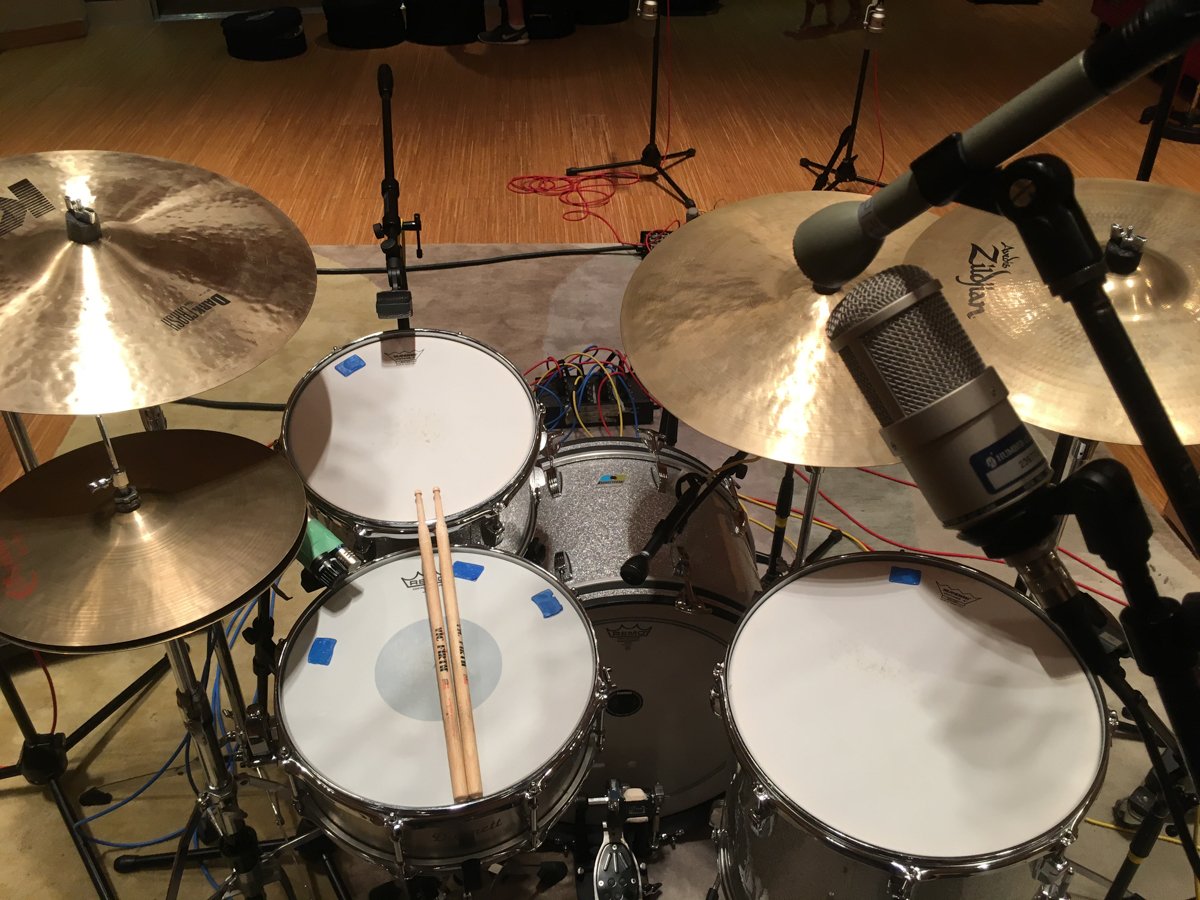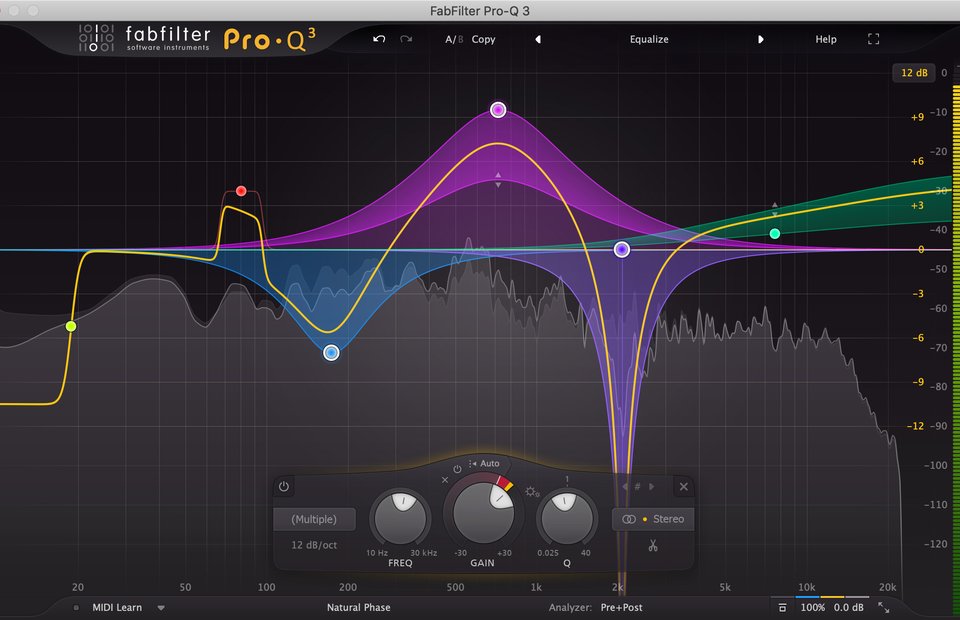When to use a linear phase EQ?
Most engineers working in a Digital Audio Workstation (DAW) will be familiar with the visual representation of a sound wave alternating between positive and negative pressure. This signal, when converted to voltage, functions like a set of instructions to a speaker. When the wave/voltage is above 0 it will push the speaker outwards. When the wave/voltage is below 0 it will pull the speaker inwards. If we reverse the speaker wires on one speaker (thus inverting the polarity), instead of the speakers working in conjunction with one another, one speaker will push and the other one will pull. The signals are now out of phase with one another i.e 180° out of phase. In theory, having two identical signals out of phase with one another will result in no signal as they will cancel each other out. You can invert the polarity of a signal in your DAW by using any plug-in that has a polarity/phase switch on it, indicated as "ø". To read more about audio phase please read: Phase: What is it and why does it matter?

Any type of filtering we apply with EQ, whether analog or digital, will introduce a short time-delay/phase shift to the signal. Most equalizers used today are called minimum phase filters and will only introduce slight phase shifts for specific frequencies depending on the filter settings. Luckily, the ear is not sensitive to absolute phase changes (whether the frequency is at its positive or negative part of the cycle) so if you're applying moderate filtering the introduced phase shift won't be very noticeable. As such, you can safely apply EQ changes without the fear of introducing artefacts that will dramatically change the sound. However, for steeper (i.e higher order) filters, the effect can become quite apparent as the phase shift introduced by the filter starts to affect the transients of your signal. This effect is called smearing.
Moreover, problems arise when you mix a filtered and phase-altered signal with another similar signal that has not been filtered, or that has been filtered in a different way. In this case, it is possible that the difference in phase between the two signals will result in some amount of destructive interference.
Any type of parallel processing or stereo recording relies on phase relationships, and altering these relationships will always change the characteristic of a sound. It's good to be aware of the alterations you make and artefacts you might introduce. If the artefacts do impose a problem you can use a linear phase EQ as a remedy.

Any type of filtering we apply with EQ, whether analog or digital, will introduce a short time-delay/phase shift to the signal; Don't worry about this. If you're applying moderate filtering the introduced phase shift won't be very noticeable and you can safely apply EQ changes without the fear of introducing artefacts.
Latency and pre-ring
There is a trade-off with linear phase EQ which must be taken into consideration. All linear phase EQs introduce an overall delay to the signal which is automatically compensated for by your DAW. When the DAW compensates for this delay an artefact called pre-ring is introduced. Pre-ring manifests itself as an audible pre-echo before the actual transient or/wave of the signal begins. With subtle EQ changes this effect can be negligible. However, with higher q values, steep filter slopes and large gain changes the effect will be more audible. Moreover, processing modes with higher resolutions (for better low frequency response) will result in higher latency, thus making the pre-ring more pronounced.
If you want to hear how this effect sounds listen to the audio examples below or alternatively you can play around with it yourself in your DAW by creating the following. Create or load a simple kick/snare/hi-hat loop and insert Pro-Q 3 in linear phase mode. Create a bell filter at around 200 Hz and boost about 20 dB with a high Q value (15+), or download this FabFilter preset. You should be able to hear the effects of pre-ring fairly clearly. It almost sounds like a reversed effect just before the original transient hits. Choosing a higher processing mode will result in a longer pre-ring.
When you engage linear phase processing in Pro-Q 3, a processing resolution button becomes available. Choosing the correct resolution is a compromise depending on the program material and your personal preference. The following resolutions are available:
- Low provides linear phase processing with minimal latency. This should be used exclusively with low Q values, or when only affecting the mid/high part of the spectrum. With a sample rate of 44.1 kHz, it results in a total latency of 3072 samples (about 70 ms).
- Medium is a good compromise between low frequency resolution and latency. This is the recommended setting for general purpose linear-phase processing. The total latency is 5120 samples at a sample rate of 44.1 kHz (about 116 ms).
- High provides great low frequency resolution. If you need to use high Q values when affecting the low end of the spectrum, use this mode. The total latency is 9216 samples at a sample rate of 44.1 kHz (about 209 ms).
- Very High provides even better low frequency resolution. The total latency is 17408 samples at a sample rate of 44.1 kHz (about 395 ms).
- Maximum results in the best low frequency resolution at the expense of a very high latency and possible pre-ring problems. The total latency here is 66560 samples at a sample rate of 44.1 kHz (about 1509 ms).
Note: when using both L/R-specific bands and M/S-specific bands at the same time, the linear phase processing will be done in two separate stages: first the L/R stage, then the M/S stage. Be aware that this will double the latency.
Cycle trough the following examples to hear the difference between processing modes:
To learn more on this topic, you can check Dan Worrall’s video 'EQ: linear phase vs minimum phase' from our video tutorials:

